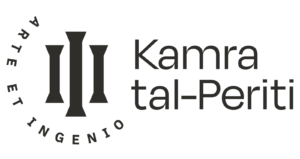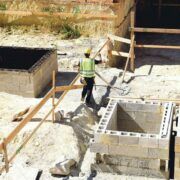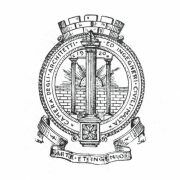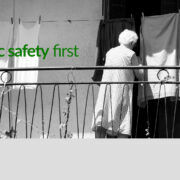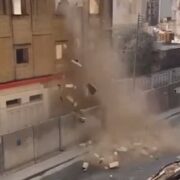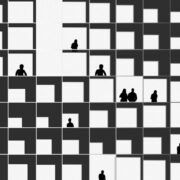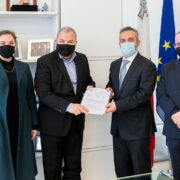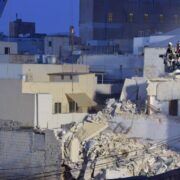CIR 01/22 | Updates regarding S.L.623.06 (LN 136 of 2019, as amended)
UPDATED 13/05/2022
The recent changes in the processing of clearance requests filed by periti on behalf of their clients to the BCA have brought to the fore yet again the serious issues related to the Avoidance of Damage to Third Party Property Regulations, S.L.623.06 (LN 136 of 2019, as amended).
Ever since the publication of these regulations in the Government Gazette on 25th June 2019, the Council of the Kamra has never ceased its efforts to have these regulations replaced with a sound suite of regulations that would align our industry with best-practice legislation found in the rest of Europe, in the interest of public safety and quality in the built environment.
Our efforts may not have been visible, and we have been very often restrained in our communication about the extensive discussions happening behind the scenes. This restraint was not because we did not feel the need to keep you updated, but because successful negotiations can only happen when the parties around the table demonstrate good faith and discretion.
Many periti have frequently reached out to the Council privately to express their frustrations or vented their disgruntlement on the Periti Discussion Group on Facebook. We have listened to every word and read every post and comment. We understand what you have been going through because all of us on Council are also in practice and go through the same things you do on a daily basis. We also share your deep concern about how the profession has been abused to make up for the grave shortcomings in the industry and its gross regulatory failures.
These shared concerns motivate the Council to doggedly and incessantly push for regulatory reform, no matter how long it takes or how long-winded the discussions are.
We are now in a position to update you on some of the progress we have made.
1. PROCESSING OF CLEARANCE REQUESTS
On 17th February 2022, when the Council was alerted by members of the profession that significant changes to the processing of commencement/clearance requests had been suddenly brought into force, we requested an urgent meeting with the BCA. After three meetings, lasting approximately 11 hours in total, we have reached an agreement on the new procedures that will be adopted by the BCA on clearance requests going forward.
The new procedures are outlined in the Guidance Note issued by the BCA linked below.
This guidance note reflects several positions the Kamra has been advocating for the past 32 months and 25 days, namely:
- The role of STOs as intended in the regulations, albeit questionable, is to supplement the setup of contractors. Exemption requests for the appointment of STOs should thus be made by contractors since it is their responsibility to appoint them. The perit-in-charge should have no involvement whatsoever in any such exemption requests.
- The provisions of the regulations do not distinguish among projects of differing scale and risk. The full application of the regulations for projects that do not result in any risk to third-parties, such as the removal of surface top-soil or floor build-ups, is excessive and disproportionate.
- Periti should be given the opportunity to exercise their professional judgement in assessing the site-specific risk of each project. Many of the new procedural provisions found in the BCA’s guidance note rely on the risk assessment of the perit-in-charge in determining requests for partial waivers of provisions in the regulations. However, such waiver requests should be filed by the beneficiary of such requests, namely the developer or the contractor, as applicable, and the BCA should make a determination on whether such a waiver request is accepted. Periti should not be compelled to carry liabilities for others.
- There should be a distinction between periti forming part of the design team, and those working in the contractor team. STOs and periti drafting method statements should form part of the latter team. This is clearly inferred in the Guidance Note.
- The BCA is clamping down on the indiscriminate use of regulation 26 to circumvent the regulations altogether. The BCA has presented Council representatives a number of outrageous regulation 26 requests signed by warrant holders that are grossly irresponsible and negligent, and which are bringing the profession into disrepute among BCA officials as a result. Although the BCA has never filed complaints to the Kamra about individual periti, the Council will not hesitate to open conduct cases should complaints filed by the BCA be substantiated.
It is important to also underscore that the negligent behaviour of some periti resulting in insurance claim settlements, is one of the reasons why PII insurance premia continue to rise. It is the Council’s duty to the entire profession to uphold standards to ensure warrant-holders practise professionally at all times.
The requests for waivers under regulation 25 as outlined in the guidance note may be filed in the form of a letter signed by the developer or contractor, as applicable, and submitted together with the risk assessment by the perit who applied for the permit, who would not carry any professional liability for the request. There are no specific forms issued by the BCA envisaged for the filing of such requests.
The Kamra has always discouraged periti from using regulation 26 declarations, and has recommended to periti the use of regulation 25, instead, when appropriate. The BCA has now adopted the Kamra’s position on this matter, as evidenced throughout the guidance note.
The potential implication of regulation 26 declarations, with no review or assessment by the BCA, is that periti signing them may be carrying third-party liability on their own. On the other hand, the fact that regulation 25 waiver requests would necessitate a determination by the BCA and would not bear the signature of the perit-in-charge would ensure that third-party liability would be apportioned in the manner that has long been established by the Civil Code.
Nevertheless, the Kamra has consistently maintained that LN 136 of 2019 (as amended) can only work through exemptions and waivers, making it a deficient piece of legislation that was hastily drafted and must be replaced at the earliest opportunity.
2. AMENDMENTS TO LN 136 OF 2019
The Kamra is engaged in concurrent discussions with the BCA on overhauling the provisions of LN 136 of 2019 to make it work. As you will certainly be aware, the Council had published a redraft in April 2021 which encompassed most of the recommendations found in the Quintano Report. The redraft was circulated among periti and the media for feedback and recommendations.
Securing amendments to LN 136 of 2019 is, of course, an interim solution until a more comprehensive suite of building and construction regulations are published and the licensing of contractors is brought into force. We understand, however, that this process is not envisaged to be completed in the short-term.
Thus, the BCA agreed with the Kamra to undertake immediate discussions on the amendments to the legal notice necessary to address its main deficiencies and eliminate all scenarios that may result in positions of conflict forced upon members of the profession by the regulations themselves.
The objective is to ensure that such amendments are brought into force in the short-term.
3. DIRECTIVE ON PRACTISING ETHICALLY AND PROFESSIONALLY WITHIN THE CONSTRAINTS OF LN 136 OF 2019
As many of you will be aware, the Council organised an Extraordinary General Meeting last December to consult with members of the profession on the principles behind a Directive the Council had drafted. The draft directive’s purpose was to reinforce the separation of the design team and contractor team, and consequently the separation of roles and liabilities of periti within the two distinct teams. Such demarcation will ensure that the confusion about professional liabilities that has arisen since these regulations came into force is addressed, and will provide direction to periti on how to comply with the First Code in the Code of Professional Conduct of Periti (S.L.390.01) governing positions of conflict.
This new Directive, whose principles were unanimously approved by the EGM, will be issued in the very near future.
4. GUIDANCE ON RISK ASSESSMENT
In previous sections of this circular, we have made mention of the requirement for periti-in-charge to draw up risk assessment reports as part of the new waiver procedures.
The Council has prepared guidance on how periti are to undertake a Risk Assessment, extracting those elements from the schedules of LN 136 of 2019 that should be prepared by the perit-in-charge, or a perit within the design team.
Guidance on the preparation of risk assessment can be found in CIR 03/22.
Perit André Pizzuto
President
